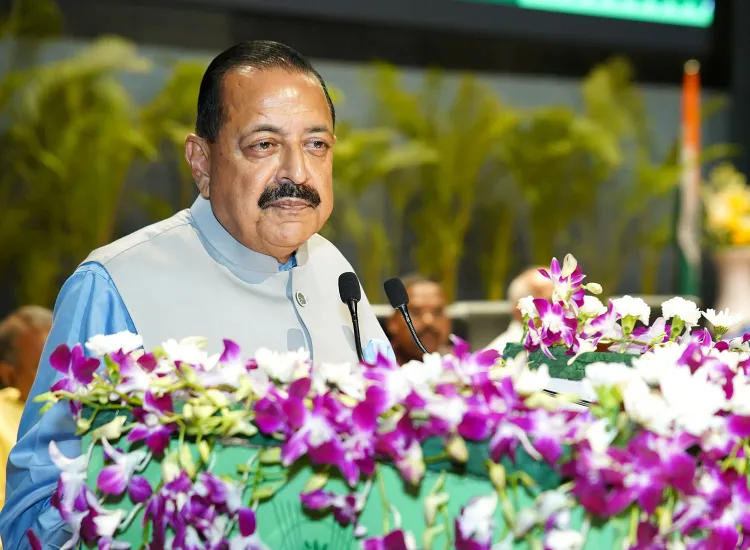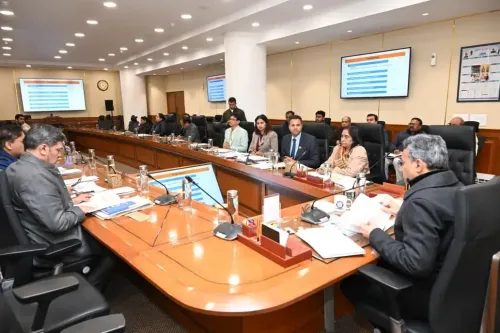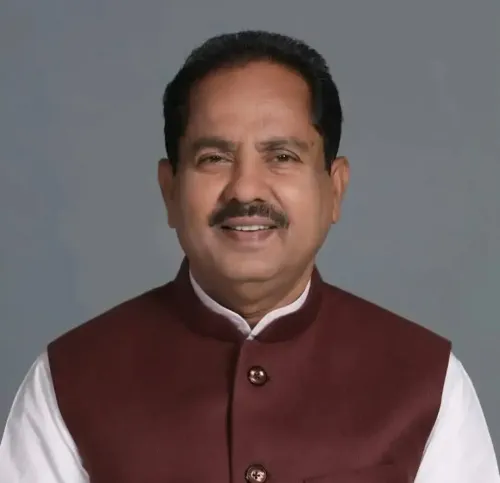Have Ground Testing and Crew Module Phase-1 Checks Been Completed for Gaganyaan’s First Uncrewed Flight?

Synopsis
Key Takeaways
- Ground testing for Gaganyaan is now complete.
- Phase-1 checks of the Crew Module have been successfully conducted.
- Development of the Human Rated Launch Vehicle (HLVM3) is finalized.
- Plans for a lunar mission by 2040 are underway.
- The establishment of the Bharatiya Antariksha Station is targeted for 2035.
New Delhi, July 23 (NationPress) - In a remarkable achievement, the ground testing and phase-1 evaluations of the Crew Module have been successfully concluded for the inaugural uncrewed flight of the Gaganyaan human spaceflight initiative, as announced by Jitendra Singh, Union Minister of State (Independent Charge) for Science and Technology, during the ongoing Monsoon Session of Parliament.
In a written statement to the Rajya Sabha, Singh detailed the current status and significant milestones reached in the ISRO-led Gaganyaan programme.
“The development and ground testing of the Human Rated Launch Vehicle (HLVM3) has been accomplished,” Singh disclosed.
Regarding the initial uncrewed mission (termed G1), “the C32-G stage and CES motors have been successfully realized. The HS200 Motors and CES Fore end up to Crew Module Jettisoning Motor have been stacked. The structures for the Crew Module and Service Module have been established, and the Crew Module Phase-1 checks are now complete,” he elaborated.
Singh further indicated that the propulsion systems for both the Crew Module and Service Module have been developed and tested.
As part of the Crew Escape System (CES), “five different types of motors have been developed and subjected to static testing,” he noted.
The established infrastructure encompasses facilities for orbital module preparation, the Gaganyaan Control Centre, crew training, and modifications to the second launch pad.
“A Test Vehicle has been developed for verifying the CES, and it has been flight-tested in TV-D1. Preparations are currently ongoing for TV-D2 and IADT-01,” Singh stated.
Additionally, the ground network configuration for flight operations and the communication network has been finalized. IDRSS-1 feeder stations and terrestrial links are now in place.
Singh mentioned that recovery operations are well underway, with recovery assets finalized and a comprehensive recovery plan developed.
“The human spaceflight programme is designed to meet the aspirations of a nation that is becoming a recognized space power. The technological and manufacturing advancements toward achieving the vision of ‘Viksit Bharat’ will depend on a transformative shift in our national research and technology development landscape,” Singh emphasized.
The long-term goals of the Indian Human Space Programme include establishing the Bharatiya Antariksha Station (BAS) by 2035 and landing an Indian on the Moon by 2040.
ISRO's ambition is to “create five modules of the Bharatiya Antariksha Station by 2035, for which approval for the development of the first module has already been granted,” Singh confirmed.
Plans for the mission aspects, launch vehicle configuration, and orbital module systems to facilitate an Indian landing on the Moon by 2040 have also commenced.
“The training modules, including step-by-step training for the ongoing Gaganyaan programme and the proposed lunar landing, are being aligned with mission timelines,” Singh concluded.










